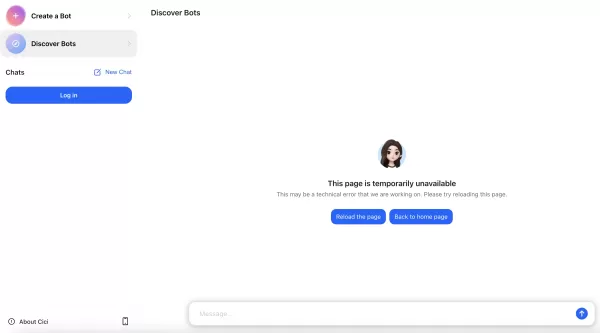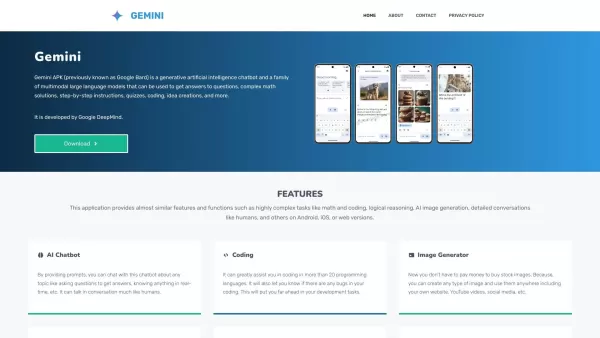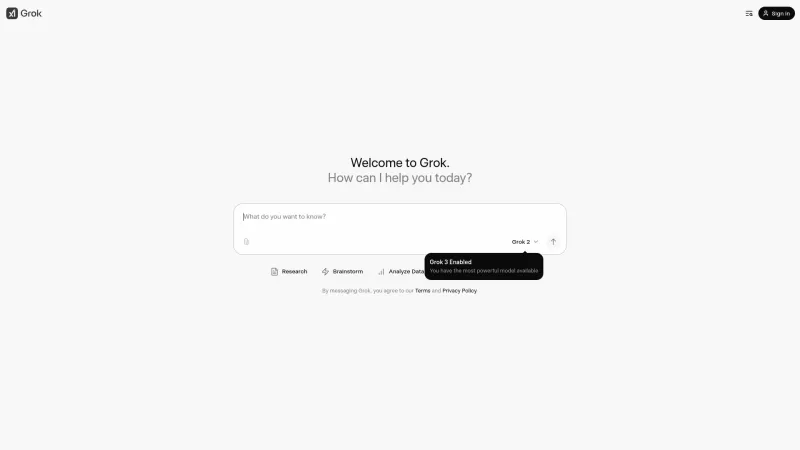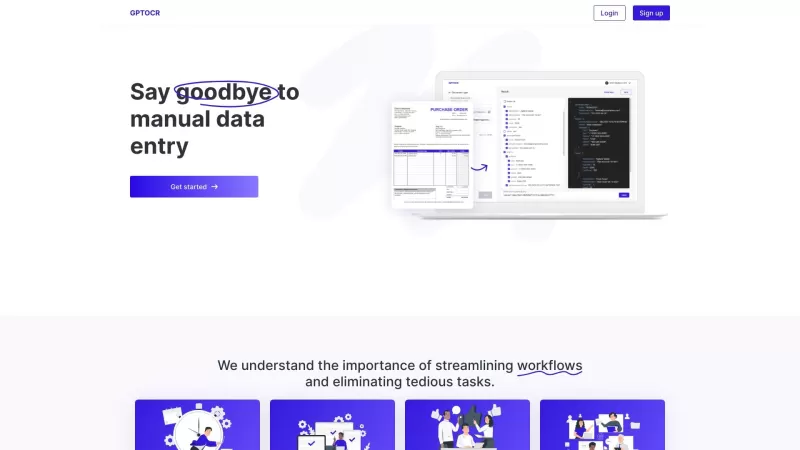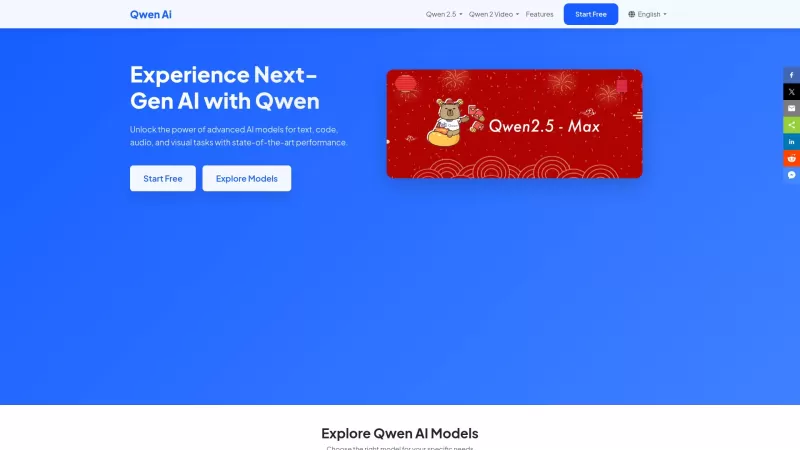Top AI Interior Design Tools for Homeowners in 2025 Revealed
In 2025, the world of home decor is being transformed by artificial intelligence, making it easier than ever for homeowners and interior designers to bring their dream spaces to life. AI-driven interior design tools are at the forefront, offering innovative solutions that cater to everyone from casual DIY enthusiasts to seasoned professionals. Let's dive into how these tools are reshaping the interior design landscape and why you should consider using them for your next home project.
Revolutionizing Home Design with AI Interior Design Tools
The Rise of AI in Interior Design
Artificial intelligence has moved from science fiction to our living rooms, fundamentally changing how we approach home design. Gone are the days of struggling to visualize a room's potential on paper. Now, AI tools help bridge the gap between imagination and reality, allowing users to create realistic mockups effortlessly. Whether it's experimenting with layouts, color schemes, or furniture arrangements, these tools make the design process more efficient, accessible, and fun. They're not just about automating tasks but enhancing creativity, acting as a partner in turning design visions into reality. With AI algorithms becoming increasingly sophisticated, the suggestions they provide are more tailored and context-aware, ensuring personalized spaces that resonate with individual styles. The adoption of these tools is on the rise, promising a future where transforming your home is as easy as a few clicks.
Benefits of Using AI Interior Design Tools
The advantages of integrating AI into your home design process are clear and compelling. First off, these tools can generate a plethora of design options in minutes, saving you the time and effort that traditional methods would require. They're also a budget-friendly alternative to hiring a professional designer, making high-quality design accessible to more people. AI tools foster better collaboration between homeowners and designers by providing visual mockups that clarify preferences and reduce misunderstandings. They offer personalized design advice that aligns with your unique style and needs, leading to spaces that truly reflect who you are. Plus, they spark inspiration, helping you discover design ideas you might not have considered. The result? A streamlined design journey from concept to completion, making it possible for anyone to achieve a beautifully personalized home.
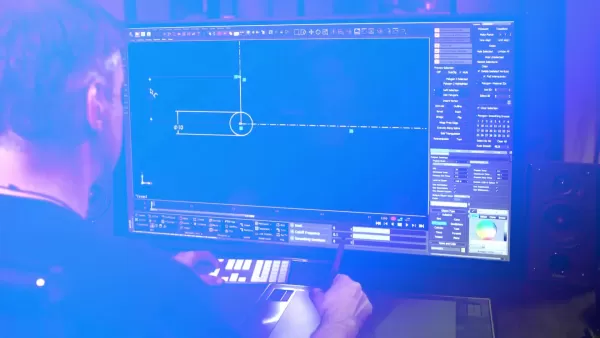
Here's a quick look at the key benefits:
Benefit Description Speed & Efficiency Generates multiple design options quickly, saving time and effort. Cost-Effectiveness Provides high-quality design at a fraction of the cost of hiring a professional. Enhanced Collaboration Facilitates clear communication of design preferences, reducing misunderstandings. Personalized Design Offers tailored suggestions based on individual styles and preferences. Inspiration & Creativity Sparks new ideas and helps users discover design possibilities.
Top 5 AI Interior Design Tools
InteriorFlow: AI-Generated Mockups and Virtual Staging
InteriorFlow stands out with its ability to quickly generate detailed design concepts and virtual staging options. It's perfect for both homeowners and real estate professionals who want to visualize their spaces without the hassle of manual design work. Its user-friendly interface and high-definition outputs make it easy to create and refine your dream space. Plus, the virtual staging feature lets you see your designs in a realistic setting, which is a game-changer for showcasing properties effectively.

ArchitectGPT: AI-Powered Home Design
ArchitectGPT is your go-to for transforming spaces with AI-powered home design. It offers an AI-generated designer that helps with everything from interior mockups to space layout. With a variety of design themes and color palettes at your fingertips, you can customize your home to perfection. The tool also supports virtual staging and text-based design prompts, making it easier than ever to visualize and create your personalized living space.
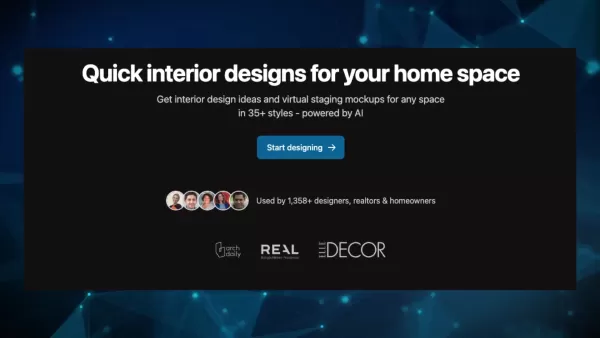
DreamHouse AI: Quick Interior Designs with Virtual Staging
DreamHouse AI is all about quick and affordable interior design solutions. It offers over 35 design styles and generates high-quality renders in seconds, priced at just $0.05 per render. The platform showcases social proof on its landing page, proving its popularity and effectiveness. Whether you're an interior designer or a homeowner, DreamHouse AI helps you transform your space with real-life-like designs and the ability to edit previous designs.
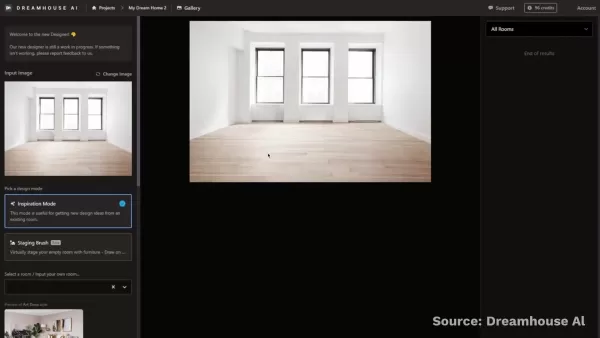
Step-by-Step Guide to Using AI Interior Design Tools
Getting Started with InteriorFlow
- Sign Up and Access the Platform: Create an account on InteriorFlow's website. You'll need to provide your email and set up a password. Once you're in, you're ready to start designing.
- Upload an Image: Choose a clear, well-lit image of the room you want to redesign. The quality of your input image will affect the AI-generated mockups.
- Choose a Design Style: Pick from a variety of styles like modern, minimalist, or classic to ensure the AI generates mockups that match your taste.
- Generate Mockups: Click 'Generate Design' to let the AI create multiple design options based on your input.
- Review and Refine: Take a close look at the mockups. You can refine them based on your feedback to get closer to your vision.
- Virtual Staging: Use this feature to see how the designs would look in the actual room, giving you a realistic preview.
- Download Your Design: Once you're happy with a design, download the high-definition output to use as a blueprint for your project.
Utilizing ArchitectGPT for Home Transformation
- Create an Account: Register on ArchitectGPT's platform with your email and a password. Log in to start exploring design options.
- Upload Room Photos: Provide clear, well-lit photos of the rooms you want to redesign for the best AI results.
- Select Design Themes: Browse through various themes to find one that matches your vision.
- Customize Design Options: Play with color palettes, furniture arrangements, and decor to find the perfect combination.
- Generate 360° Panorama Shots: Create comprehensive 360-degree views of your redesigned space for a realistic perspective.
- Use Text-Based Prompts: Input specific design requests to fine-tune your project, like the type of furniture or lighting you want.
- Finalize and Implement: Once you have your final design, use it as a guide for your home renovation or share it with contractors.
Designing with DreamHouse AI
- Sign Up: Create an account on the DreamHouse AI platform to get started.
- Upload Images: Choose high-quality images of the spaces you want to design for the best results.
- Select Inspiration Mode: Use this mode to get fresh design ideas based on an existing room.
- Choose Staging Brush: Opt for the 'Staging Brush' to virtually stage an empty room, drawing on the image to place furniture and decor.
- Preview Art Deco Style: See how different design options, like Art Deco, would look in your space.
- Generate Designs: Let DreamHouse AI create design options based on your chosen style. Refine them until you find the perfect aesthetic.
Pricing for AI Interior Design Tools
Affordable AI Solutions for Every Budget
The pricing for AI interior design tools varies, catering to different budgets and needs. DreamHouse AI, for example, is incredibly affordable at $0.05 per render. Other platforms might offer subscription models with different tiers, providing access to additional features and design options. Some tools offer free trials or limited free versions, though these often come with restrictions. Subscription plans range from basic to premium, with unlimited access and priority support for professional designers. Pay-as-you-go options are also available, where you buy credits to generate designs as needed. It's crucial to compare the pricing and features of different tools to find the best fit for your needs.
Pros and Cons of AI Interior Design Tools
Pros
- Increased efficiency in generating design options.
- Cost-effective alternative to hiring a professional designer.
- Enhanced collaboration and communication between homeowners and designers.
- Personalized design advice based on individual styles and preferences.
- Valuable inspiration for new design ideas.
- Time-saving tool.
Cons
- Potential for inaccuracies and biases in AI-generated designs.
- Limited creativity and originality compared to human designers.
- Dependence on high-quality input data for accurate results.
- Ethical concerns related to data privacy and algorithmic bias.
- Inability to address complex architectural constraints without human intervention.
Core Features of Top AI Interior Design Tools
Key Features Transforming Home Design
AI interior design tools are packed with features that revolutionize how we design our homes. AI-powered design generation lets you input basic parameters and receive a variety of design suggestions. Virtual staging helps you see how furniture and decor will look in your room before you commit. 3D modeling offers a realistic view of your redesigned space. You can customize color palettes to find the perfect aesthetic, and furniture arrangement tools help optimize space and functionality. Style recommendations based on your preferences open up new design possibilities, and real-time feedback allows for continuous refinement. These features make AI tools an essential part of modern home design.
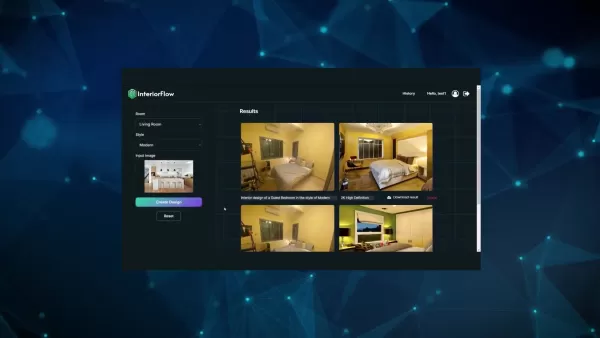
Versatile Use Cases for AI Interior Design Tools
Applications Across Various Sectors
AI interior design tools are versatile, serving various sectors effectively. Homeowners can visualize and plan their renovations, ensuring they get the look they want. Interior designers can generate multiple design concepts quickly, boosting their productivity. Real estate agents use virtual staging to showcase properties, attracting more buyers. Furniture retailers create mockups to help customers see how products will fit in their homes. Architects explore design options and streamline their workflow, while rental property owners attract tenants with appealing designs. These tools make the design process smoother and more satisfying across the board.
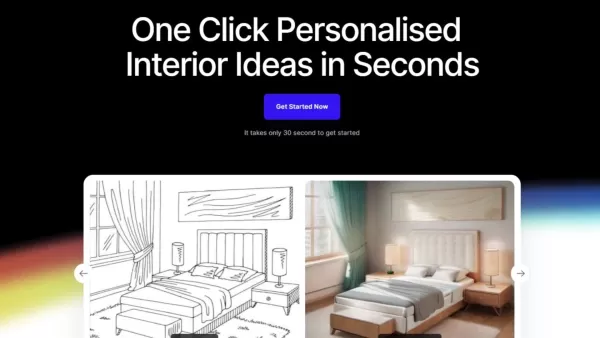
Frequently Asked Questions
How accurate are AI interior design tools?
AI interior design tools have improved significantly in accuracy, thanks to advancements in machine learning and computer vision. While the accuracy depends on the tool and input quality, many platforms now produce highly realistic and detailed mockups. They can simulate lighting, textures, and spatial relationships well, giving you a clear picture of your redesigned space. However, AI designs are based on algorithms and might not always perfectly match your preferences or real-world constraints. It's best to use these tools as a starting point and refine the designs to suit your needs. The best tools also use user feedback to enhance their accuracy over time.
Are AI interior design tools easy to use?
The main goal of AI interior design tools is to make design accessible to everyone. Most platforms are designed to be user-friendly, with intuitive interfaces and helpful tutorials. They often feature one-click solutions and drag-and-drop functionality, allowing you to experiment with designs without needing technical skills. However, the learning curve can vary depending on the tool's complexity. Some offer advanced features that might take a bit more time to master, but the basics are usually straightforward. Many platforms also offer excellent customer support and resources to help you get the most out of them.
Can AI interior design tools replace professional designers?
While AI tools are incredibly useful for visualizing and planning home renovations, they're not likely to replace professional designers entirely. These tools are best seen as a complement to human expertise. Professional designers bring knowledge, experience, and creativity that AI can't fully replicate. They can offer personalized advice, address unique architectural challenges, and manage complex projects. AI excels at generating design options and sparking inspiration, but it might not handle the nuances of real-world design challenges as well. The best approach is often to combine AI's power with a professional designer's expertise to create truly exceptional living spaces.
Related Questions
What are the ethical considerations of using AI in interior design?
Using AI in interior design brings up several ethical considerations. Data privacy is a big one, as AI tools collect and analyze user data to generate designs. It's crucial to understand how this data is handled and protected. Another concern is algorithmic bias; if the training data is biased, the designs might reflect those biases. Developers need to address these issues to ensure their tools are fair and inclusive. There's also the question of artistic integrity. While AI can create impressive designs, some argue it lacks the creativity and originality of human designers. It's important to see AI as a tool that should be critically evaluated and refined by humans to ensure it reflects true artistic expression. As AI becomes more prevalent, addressing these ethical considerations and developing guidelines for responsible use is essential.
How will AI interior design tools evolve in the next 5 years?
In the next five years, AI interior design tools are expected to become even more advanced and user-friendly. We'll likely see improvements in the realism and accuracy of AI-generated mockups, thanks to ongoing developments in machine learning and computer vision. These tools will offer more personalized design recommendations, considering individual preferences, lifestyles, and even emotional states. Integration with other smart home technologies will allow for seamless control of lighting, temperature, and other factors based on design insights. Augmented reality (AR) will enhance the visualization experience, letting you overlay AI designs onto real-world spaces for a more immersive preview. AI tools will also become more collaborative, enabling real-time design work between designers and homeowners. These advancements will make AI interior design tools an even more vital asset for creating beautiful and functional living spaces.
Related article
 Ultimate Guide to Vocal and Music Track Isolation with Splitter AI
For music lovers, aspiring artists, and audio professionals alike, Splitter AI offers revolutionary capabilities to transform how you work with sound. This in-depth exploration reveals how this artificial intelligence platform can decompose full trac
Ultimate Guide to Vocal and Music Track Isolation with Splitter AI
For music lovers, aspiring artists, and audio professionals alike, Splitter AI offers revolutionary capabilities to transform how you work with sound. This in-depth exploration reveals how this artificial intelligence platform can decompose full trac
 OpenAI Fixes ChatGPT Over-politeness Bug, Explains AI Flaw
OpenAI has reversed a recent personality adjustment to its flagship GPT-4o model after widespread reports emerged of the AI system exhibiting excessive agreeableness, including unwarranted praise for dangerous or absurd user suggestions. The emergenc
OpenAI Fixes ChatGPT Over-politeness Bug, Explains AI Flaw
OpenAI has reversed a recent personality adjustment to its flagship GPT-4o model after widespread reports emerged of the AI system exhibiting excessive agreeableness, including unwarranted praise for dangerous or absurd user suggestions. The emergenc
 Piclumen AI Offers Free AI Art Creation in 2025
In the rapidly changing world of digital content creation, Piclumen AI emerges as a standout completely free solution for AI-powered image generation. This innovative platform enables users to create professional-quality visuals without financial bar
Comments (6)
0/200
Piclumen AI Offers Free AI Art Creation in 2025
In the rapidly changing world of digital content creation, Piclumen AI emerges as a standout completely free solution for AI-powered image generation. This innovative platform enables users to create professional-quality visuals without financial bar
Comments (6)
0/200
![RobertWhite]() RobertWhite
RobertWhite
 September 25, 2025 at 10:30:39 PM EDT
September 25, 2025 at 10:30:39 PM EDT
Enfin des outils qui transforment mes idées bizarres en designs potables! 🤣 Mais est-ce que l'IA va comprendre mon obsession pour le violet fluo et les cactus géants? Vivement 2025 pour tester!


 0
0
![JoseDavis]() JoseDavis
JoseDavis
 September 21, 2025 at 2:30:36 AM EDT
September 21, 2025 at 2:30:36 AM EDT
Ces outils d'IA pour la décoration intérieure ont l'air sympa, mais est-ce qu'ils tiennent vraiment compte des contraintes de budget ? 😅 J'ai peur que ça me propose des designs de luxe alors que je dois compter chaque euro. Dommage qu'ils ne parlent pas de cette fonctionnalité dans l'article...


 0
0
![KevinJohnson]() KevinJohnson
KevinJohnson
 August 5, 2025 at 1:01:00 PM EDT
August 5, 2025 at 1:01:00 PM EDT
These AI interior design tools sound like a game-changer for 2025! I’m curious if they can really nail my quirky taste in decor or just churn out generic vibes. Anyone tried one yet? 😄


 0
0
![AlbertWilson]() AlbertWilson
AlbertWilson
 August 4, 2025 at 9:00:59 PM EDT
August 4, 2025 at 9:00:59 PM EDT
These AI design tools sound like a game-changer for decorating! I’m curious if they can really nail my quirky taste in retro furniture. 🤔 Anyone tried one yet?


 0
0
![ChristopherThomas]() ChristopherThomas
ChristopherThomas
 August 2, 2025 at 11:07:14 AM EDT
August 2, 2025 at 11:07:14 AM EDT
These AI interior design tools sound like a game-changer for 2025! I'm curious if they can really nail my quirky taste in decor. Anyone tried one yet? 😄


 0
0
![NicholasAdams]() NicholasAdams
NicholasAdams
 July 27, 2025 at 9:19:05 PM EDT
July 27, 2025 at 9:19:05 PM EDT
These AI interior design tools sound like a game-changer for 2025! I'm curious if they can really nail my quirky taste in retro decor. Anyone tried one yet? 😎


 0
0
In 2025, the world of home decor is being transformed by artificial intelligence, making it easier than ever for homeowners and interior designers to bring their dream spaces to life. AI-driven interior design tools are at the forefront, offering innovative solutions that cater to everyone from casual DIY enthusiasts to seasoned professionals. Let's dive into how these tools are reshaping the interior design landscape and why you should consider using them for your next home project.
Revolutionizing Home Design with AI Interior Design Tools
The Rise of AI in Interior Design
Artificial intelligence has moved from science fiction to our living rooms, fundamentally changing how we approach home design. Gone are the days of struggling to visualize a room's potential on paper. Now, AI tools help bridge the gap between imagination and reality, allowing users to create realistic mockups effortlessly. Whether it's experimenting with layouts, color schemes, or furniture arrangements, these tools make the design process more efficient, accessible, and fun. They're not just about automating tasks but enhancing creativity, acting as a partner in turning design visions into reality. With AI algorithms becoming increasingly sophisticated, the suggestions they provide are more tailored and context-aware, ensuring personalized spaces that resonate with individual styles. The adoption of these tools is on the rise, promising a future where transforming your home is as easy as a few clicks.
Benefits of Using AI Interior Design Tools
The advantages of integrating AI into your home design process are clear and compelling. First off, these tools can generate a plethora of design options in minutes, saving you the time and effort that traditional methods would require. They're also a budget-friendly alternative to hiring a professional designer, making high-quality design accessible to more people. AI tools foster better collaboration between homeowners and designers by providing visual mockups that clarify preferences and reduce misunderstandings. They offer personalized design advice that aligns with your unique style and needs, leading to spaces that truly reflect who you are. Plus, they spark inspiration, helping you discover design ideas you might not have considered. The result? A streamlined design journey from concept to completion, making it possible for anyone to achieve a beautifully personalized home.

Here's a quick look at the key benefits:
| Benefit | Description |
|---|---|
| Speed & Efficiency | Generates multiple design options quickly, saving time and effort. |
| Cost-Effectiveness | Provides high-quality design at a fraction of the cost of hiring a professional. |
| Enhanced Collaboration | Facilitates clear communication of design preferences, reducing misunderstandings. |
| Personalized Design | Offers tailored suggestions based on individual styles and preferences. |
| Inspiration & Creativity | Sparks new ideas and helps users discover design possibilities. |
Top 5 AI Interior Design Tools
InteriorFlow: AI-Generated Mockups and Virtual Staging
InteriorFlow stands out with its ability to quickly generate detailed design concepts and virtual staging options. It's perfect for both homeowners and real estate professionals who want to visualize their spaces without the hassle of manual design work. Its user-friendly interface and high-definition outputs make it easy to create and refine your dream space. Plus, the virtual staging feature lets you see your designs in a realistic setting, which is a game-changer for showcasing properties effectively.

ArchitectGPT: AI-Powered Home Design
ArchitectGPT is your go-to for transforming spaces with AI-powered home design. It offers an AI-generated designer that helps with everything from interior mockups to space layout. With a variety of design themes and color palettes at your fingertips, you can customize your home to perfection. The tool also supports virtual staging and text-based design prompts, making it easier than ever to visualize and create your personalized living space.

DreamHouse AI: Quick Interior Designs with Virtual Staging
DreamHouse AI is all about quick and affordable interior design solutions. It offers over 35 design styles and generates high-quality renders in seconds, priced at just $0.05 per render. The platform showcases social proof on its landing page, proving its popularity and effectiveness. Whether you're an interior designer or a homeowner, DreamHouse AI helps you transform your space with real-life-like designs and the ability to edit previous designs.

Step-by-Step Guide to Using AI Interior Design Tools
Getting Started with InteriorFlow
- Sign Up and Access the Platform: Create an account on InteriorFlow's website. You'll need to provide your email and set up a password. Once you're in, you're ready to start designing.
- Upload an Image: Choose a clear, well-lit image of the room you want to redesign. The quality of your input image will affect the AI-generated mockups.
- Choose a Design Style: Pick from a variety of styles like modern, minimalist, or classic to ensure the AI generates mockups that match your taste.
- Generate Mockups: Click 'Generate Design' to let the AI create multiple design options based on your input.
- Review and Refine: Take a close look at the mockups. You can refine them based on your feedback to get closer to your vision.
- Virtual Staging: Use this feature to see how the designs would look in the actual room, giving you a realistic preview.
- Download Your Design: Once you're happy with a design, download the high-definition output to use as a blueprint for your project.
Utilizing ArchitectGPT for Home Transformation
- Create an Account: Register on ArchitectGPT's platform with your email and a password. Log in to start exploring design options.
- Upload Room Photos: Provide clear, well-lit photos of the rooms you want to redesign for the best AI results.
- Select Design Themes: Browse through various themes to find one that matches your vision.
- Customize Design Options: Play with color palettes, furniture arrangements, and decor to find the perfect combination.
- Generate 360° Panorama Shots: Create comprehensive 360-degree views of your redesigned space for a realistic perspective.
- Use Text-Based Prompts: Input specific design requests to fine-tune your project, like the type of furniture or lighting you want.
- Finalize and Implement: Once you have your final design, use it as a guide for your home renovation or share it with contractors.
Designing with DreamHouse AI
- Sign Up: Create an account on the DreamHouse AI platform to get started.
- Upload Images: Choose high-quality images of the spaces you want to design for the best results.
- Select Inspiration Mode: Use this mode to get fresh design ideas based on an existing room.
- Choose Staging Brush: Opt for the 'Staging Brush' to virtually stage an empty room, drawing on the image to place furniture and decor.
- Preview Art Deco Style: See how different design options, like Art Deco, would look in your space.
- Generate Designs: Let DreamHouse AI create design options based on your chosen style. Refine them until you find the perfect aesthetic.
Pricing for AI Interior Design Tools
Affordable AI Solutions for Every Budget
The pricing for AI interior design tools varies, catering to different budgets and needs. DreamHouse AI, for example, is incredibly affordable at $0.05 per render. Other platforms might offer subscription models with different tiers, providing access to additional features and design options. Some tools offer free trials or limited free versions, though these often come with restrictions. Subscription plans range from basic to premium, with unlimited access and priority support for professional designers. Pay-as-you-go options are also available, where you buy credits to generate designs as needed. It's crucial to compare the pricing and features of different tools to find the best fit for your needs.
Pros and Cons of AI Interior Design Tools
Pros
- Increased efficiency in generating design options.
- Cost-effective alternative to hiring a professional designer.
- Enhanced collaboration and communication between homeowners and designers.
- Personalized design advice based on individual styles and preferences.
- Valuable inspiration for new design ideas.
- Time-saving tool.
Cons
- Potential for inaccuracies and biases in AI-generated designs.
- Limited creativity and originality compared to human designers.
- Dependence on high-quality input data for accurate results.
- Ethical concerns related to data privacy and algorithmic bias.
- Inability to address complex architectural constraints without human intervention.
Core Features of Top AI Interior Design Tools
Key Features Transforming Home Design
AI interior design tools are packed with features that revolutionize how we design our homes. AI-powered design generation lets you input basic parameters and receive a variety of design suggestions. Virtual staging helps you see how furniture and decor will look in your room before you commit. 3D modeling offers a realistic view of your redesigned space. You can customize color palettes to find the perfect aesthetic, and furniture arrangement tools help optimize space and functionality. Style recommendations based on your preferences open up new design possibilities, and real-time feedback allows for continuous refinement. These features make AI tools an essential part of modern home design.

Versatile Use Cases for AI Interior Design Tools
Applications Across Various Sectors
AI interior design tools are versatile, serving various sectors effectively. Homeowners can visualize and plan their renovations, ensuring they get the look they want. Interior designers can generate multiple design concepts quickly, boosting their productivity. Real estate agents use virtual staging to showcase properties, attracting more buyers. Furniture retailers create mockups to help customers see how products will fit in their homes. Architects explore design options and streamline their workflow, while rental property owners attract tenants with appealing designs. These tools make the design process smoother and more satisfying across the board.

Frequently Asked Questions
How accurate are AI interior design tools?
AI interior design tools have improved significantly in accuracy, thanks to advancements in machine learning and computer vision. While the accuracy depends on the tool and input quality, many platforms now produce highly realistic and detailed mockups. They can simulate lighting, textures, and spatial relationships well, giving you a clear picture of your redesigned space. However, AI designs are based on algorithms and might not always perfectly match your preferences or real-world constraints. It's best to use these tools as a starting point and refine the designs to suit your needs. The best tools also use user feedback to enhance their accuracy over time.
Are AI interior design tools easy to use?
The main goal of AI interior design tools is to make design accessible to everyone. Most platforms are designed to be user-friendly, with intuitive interfaces and helpful tutorials. They often feature one-click solutions and drag-and-drop functionality, allowing you to experiment with designs without needing technical skills. However, the learning curve can vary depending on the tool's complexity. Some offer advanced features that might take a bit more time to master, but the basics are usually straightforward. Many platforms also offer excellent customer support and resources to help you get the most out of them.
Can AI interior design tools replace professional designers?
While AI tools are incredibly useful for visualizing and planning home renovations, they're not likely to replace professional designers entirely. These tools are best seen as a complement to human expertise. Professional designers bring knowledge, experience, and creativity that AI can't fully replicate. They can offer personalized advice, address unique architectural challenges, and manage complex projects. AI excels at generating design options and sparking inspiration, but it might not handle the nuances of real-world design challenges as well. The best approach is often to combine AI's power with a professional designer's expertise to create truly exceptional living spaces.
Related Questions
What are the ethical considerations of using AI in interior design?
Using AI in interior design brings up several ethical considerations. Data privacy is a big one, as AI tools collect and analyze user data to generate designs. It's crucial to understand how this data is handled and protected. Another concern is algorithmic bias; if the training data is biased, the designs might reflect those biases. Developers need to address these issues to ensure their tools are fair and inclusive. There's also the question of artistic integrity. While AI can create impressive designs, some argue it lacks the creativity and originality of human designers. It's important to see AI as a tool that should be critically evaluated and refined by humans to ensure it reflects true artistic expression. As AI becomes more prevalent, addressing these ethical considerations and developing guidelines for responsible use is essential.
How will AI interior design tools evolve in the next 5 years?
In the next five years, AI interior design tools are expected to become even more advanced and user-friendly. We'll likely see improvements in the realism and accuracy of AI-generated mockups, thanks to ongoing developments in machine learning and computer vision. These tools will offer more personalized design recommendations, considering individual preferences, lifestyles, and even emotional states. Integration with other smart home technologies will allow for seamless control of lighting, temperature, and other factors based on design insights. Augmented reality (AR) will enhance the visualization experience, letting you overlay AI designs onto real-world spaces for a more immersive preview. AI tools will also become more collaborative, enabling real-time design work between designers and homeowners. These advancements will make AI interior design tools an even more vital asset for creating beautiful and functional living spaces.
 Ultimate Guide to Vocal and Music Track Isolation with Splitter AI
For music lovers, aspiring artists, and audio professionals alike, Splitter AI offers revolutionary capabilities to transform how you work with sound. This in-depth exploration reveals how this artificial intelligence platform can decompose full trac
Ultimate Guide to Vocal and Music Track Isolation with Splitter AI
For music lovers, aspiring artists, and audio professionals alike, Splitter AI offers revolutionary capabilities to transform how you work with sound. This in-depth exploration reveals how this artificial intelligence platform can decompose full trac
 OpenAI Fixes ChatGPT Over-politeness Bug, Explains AI Flaw
OpenAI has reversed a recent personality adjustment to its flagship GPT-4o model after widespread reports emerged of the AI system exhibiting excessive agreeableness, including unwarranted praise for dangerous or absurd user suggestions. The emergenc
OpenAI Fixes ChatGPT Over-politeness Bug, Explains AI Flaw
OpenAI has reversed a recent personality adjustment to its flagship GPT-4o model after widespread reports emerged of the AI system exhibiting excessive agreeableness, including unwarranted praise for dangerous or absurd user suggestions. The emergenc
 Piclumen AI Offers Free AI Art Creation in 2025
In the rapidly changing world of digital content creation, Piclumen AI emerges as a standout completely free solution for AI-powered image generation. This innovative platform enables users to create professional-quality visuals without financial bar
Piclumen AI Offers Free AI Art Creation in 2025
In the rapidly changing world of digital content creation, Piclumen AI emerges as a standout completely free solution for AI-powered image generation. This innovative platform enables users to create professional-quality visuals without financial bar
 September 25, 2025 at 10:30:39 PM EDT
September 25, 2025 at 10:30:39 PM EDT
Enfin des outils qui transforment mes idées bizarres en designs potables! 🤣 Mais est-ce que l'IA va comprendre mon obsession pour le violet fluo et les cactus géants? Vivement 2025 pour tester!


 0
0
 September 21, 2025 at 2:30:36 AM EDT
September 21, 2025 at 2:30:36 AM EDT
Ces outils d'IA pour la décoration intérieure ont l'air sympa, mais est-ce qu'ils tiennent vraiment compte des contraintes de budget ? 😅 J'ai peur que ça me propose des designs de luxe alors que je dois compter chaque euro. Dommage qu'ils ne parlent pas de cette fonctionnalité dans l'article...


 0
0
 August 5, 2025 at 1:01:00 PM EDT
August 5, 2025 at 1:01:00 PM EDT
These AI interior design tools sound like a game-changer for 2025! I’m curious if they can really nail my quirky taste in decor or just churn out generic vibes. Anyone tried one yet? 😄


 0
0
 August 4, 2025 at 9:00:59 PM EDT
August 4, 2025 at 9:00:59 PM EDT
These AI design tools sound like a game-changer for decorating! I’m curious if they can really nail my quirky taste in retro furniture. 🤔 Anyone tried one yet?


 0
0
 August 2, 2025 at 11:07:14 AM EDT
August 2, 2025 at 11:07:14 AM EDT
These AI interior design tools sound like a game-changer for 2025! I'm curious if they can really nail my quirky taste in decor. Anyone tried one yet? 😄


 0
0
 July 27, 2025 at 9:19:05 PM EDT
July 27, 2025 at 9:19:05 PM EDT
These AI interior design tools sound like a game-changer for 2025! I'm curious if they can really nail my quirky taste in retro decor. Anyone tried one yet? 😎


 0
0

